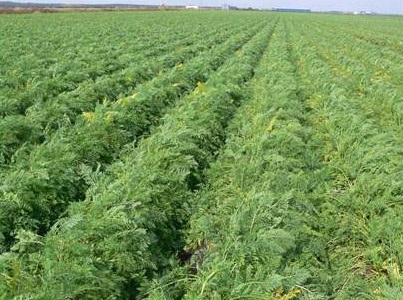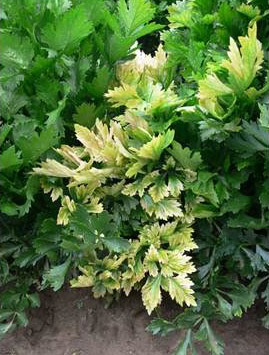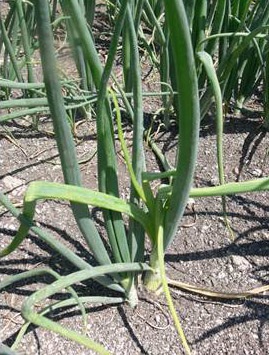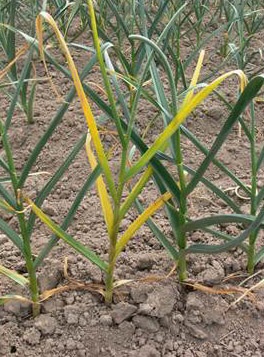Aster yellows in vegetable crops
Understand how aster yellows affects vegetable crops and what you can do to control it.
Overview
Aster yellows (Candidatus Phytoplasma spp.) (AY) is a disease that can infect over 300 species of plants, including many agricultural crops. The disease is caused by a bacteria-like organism called a phytoplasma. The phytoplasma lives and reproduces in the tissues (phloem) of host plants and in insects called leafhoppers.
AY spreads during the growing season. The level of occurrence depends on the leafhopper population in the area. Ontario has had seasons where AY has been widespread over the past decade.
How it spreads
Leafhoppers, particularly the aster leafhopper (Macrosteles phytoplasma) (ALH), carry AY. These insects are found across North America.
In Ontario, leafhoppers survive the winter as eggs in the tissues of winter wheat, rye and grasses. In spring, the eggs hatch and develop into nymphs that feed on these crops. As the leafhoppers grow into adults, they move to other plants including weeds and vegetables.
If a leafhopper feeds on a weed infected with AY, it picks up the disease. The disease needs 2 to 3 weeks to grow inside the insect before it can spread to other plants. Once infected, the leafhopper can spread AY for the rest of its life. This process is why AY often appears later in the growing season.
Incidence
AY is usually rare in Ontario. In some years, adult leafhoppers from the southern United States can travel north with storms and arrive before local populations have had a chance to develop. If these leafhoppers carry AY, they can spread the disease quickly.
The risk of AY depends on:
- how many leafhoppers are present
- how many are carrying the disease
Even a small number of infected leafhoppers can cause high levels of disease. When both the number of leafhoppers and infection rates are high, AY can cause serious damage.
Symptoms in vegetable crops
Symptoms of AY vary depending on the host crop.
Carrots
- yellowing leaves
- stunted growth
- bright red colour in infected plants
Celery
- stunted plants
- yellow or bleached leaves with green veins
Onions
- stunted plants
- light and pale green center leaves
Garlic
- stunted plants
- severe leaf yellowing
- red colouration and red pigments in lower leaves
How to manage aster yellows
AY is difficult to control. Most vegetable crops are not naturally resistant.
To reduce the risk:
- plant resistant varieties when available
- use insecticides at the right time to control leafhoppers
- control weed that may host the disease



